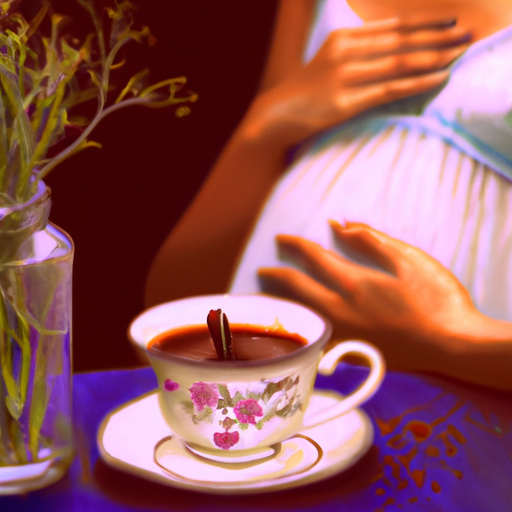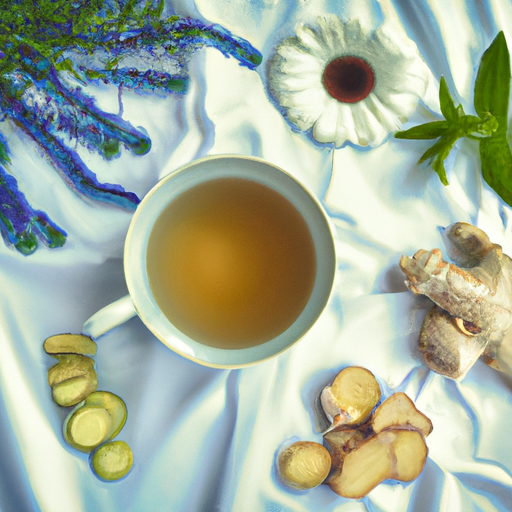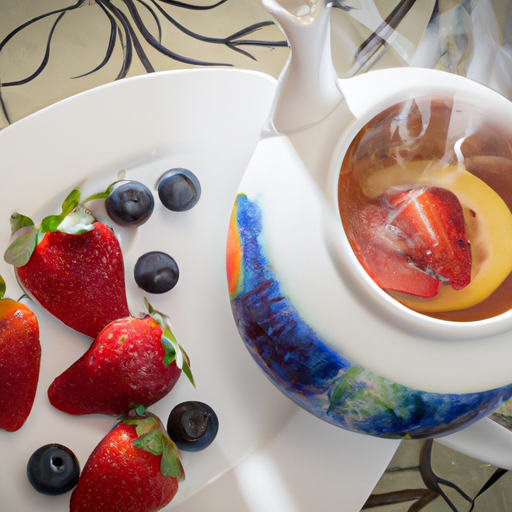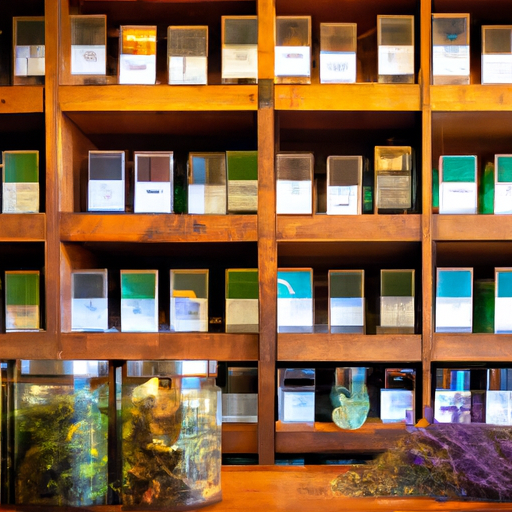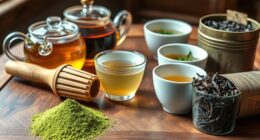Hey there, fellow tea enthusiasts! Have you ever wondered if the length of time you steep your herbal tea really makes a difference? Well, I’ve got some exciting news for you – it absolutely does!
In this article, we’re going to dive deep into the science behind steeping and explore the factors that affect the steeping time of different herbal teas.
From delicate chamomile to robust peppermint, each herbal tea has its own ideal steeping time to unlock its full flavor potential. But don’t worry, I’ll also be sharing some handy recommendations to ensure you get the perfect cup every time.
We’ll also discuss the risks of oversteeping and understeeping, as well as how to adjust the steeping time to suit your personal taste preferences. Plus, I’ll let you in on some techniques and tools that can help you achieve consistent and delicious results.
So, get ready to embark on a tea-steeping adventure with me as we uncover the secrets to brewing the perfect cup of herbal tea. Let’s get started!
Key Takeaways
- Steeping time impacts the flavor and aroma of herbal tea.
- Different herbal teas require varying steeping times.
- Longer steeping time creates a stronger brew, while shorter steeping time results in a milder taste.
- Adjusting steeping time can release beneficial compounds in herbs and impact the health benefits of tea.
The Science Behind Steeping
Doesn’t it feel like time slows down as you watch the vibrant colors of the herbal tea leaves infuse the water, releasing their aromatic oils and creating a soothing, flavorful brew? Steeping is not just a matter of waiting for the tea to reach a certain color; it’s a delicate process that affects the flavor profile and overall experience.
The length of steeping time can greatly impact the taste of herbal tea. Longer steeping times allow for a more intense flavor as the water extracts more of the tea’s essential oils and compounds. This results in a richer, more robust taste. Additionally, longer steeping times can also enhance the health benefits of herbal teas, as more of the beneficial compounds are released into the water.
However, it’s important to find the right balance, as oversteeping can lead to bitterness. Now, let’s explore the factors that affect the steeping time.
Factors Affecting Steeping Time
When it comes to steeping herbal tea, there are several factors that can affect the steeping time. The type of herbal tea plays a crucial role, as different herbs have different flavors and properties that require varying steeping times.
Additionally, the size and density of the tea leaves can impact the infusion process, with smaller and denser leaves requiring more time to fully release their flavors.
Lastly, water temperature is another important factor, as higher temperatures can extract flavors more quickly, while lower temperatures may require a longer steeping time to achieve the desired taste.
Type of Herbal Tea
To fully experience the soothing benefits of different herbal teas, steep them for varying lengths of time. The type of herbal tea you’re brewing plays a significant role in determining the ideal steeping time.
Here are some examples:
-
Chamomile tea: Steep for 5-7 minutes to release its calming properties and promote better sleep.
-
Peppermint tea: Steep for 3-5 minutes to extract its refreshing flavor and aid digestion.
-
Hibiscus tea: Steep for 7-10 minutes to unlock its vibrant taste and benefit from its high antioxidant content.
By adjusting the steeping time according to the type of herbal tea, you can maximize its flavor and health benefits.
Now, let’s explore another factor that affects the steeping process: leaf size and density.
Leaf Size and Density
Get ready to discover how the size and density of tea leaves can impact your brewing experience and enhance the flavors of your favorite brews. The leaf size and density can affect the infusion time, as smaller and less dense leaves tend to steep faster than larger and denser ones. When steeping herbal tea, it is important to consider the leaf size to achieve the desired strength and flavor. To help you understand the relationship between leaf size and infusion time, I have created a table below:
| Leaf Size | Infusion Time |
|---|---|
| Small | 2-3 minutes |
| Medium | 3-4 minutes |
| Large | 4-5 minutes |
By adjusting the infusion time based on the leaf size, you can control the strength of your herbal tea. Now, let’s move on to the next section and explore how water temperature affects the brewing process.
Water Temperature
Now, let’s dive into how the temperature of your water can impact the brewing process and bring out the rich flavors in your favorite cuppa.
When it comes to steeping herbal tea, the water temperature plays a crucial role in unlocking its full potential. Here are three key things to keep in mind:
-
Hotter isn’t always better: Using boiling water for delicate herbal teas can lead to a bitter taste. Instead, opt for slightly cooler water around 175°F (80°C) to preserve their delicate flavors.
-
Heat it up for robust brews: For robust herbal blends like chamomile or peppermint, higher water temperatures around 200°F (93°C) can help extract the bold flavors and soothing aromas.
-
Experiment with temperature: Don’t be afraid to experiment and find what works best for you. Adjusting the water temperature can bring out different nuances and depths of flavor in your herbal tea.
Understanding the impact of water temperature on steeping techniques is essential for creating a perfect cup. But what about steeping recommendations for different herbal teas? Let’s explore that next to discover the best methods for each unique blend.
Steeping Recommendations for Different Herbal Teas
Steeping herbal teas for different durations can greatly impact their flavor and aroma. Each type of herbal tea has its own steeping recommendations to bring out its unique flavor profile. Here are some general guidelines for steeping different herbal teas:
| Herbal Tea | Steeping Time | Water Temperature |
|---|---|---|
| Chamomile | 5-7 minutes | 200°F |
| Peppermint | 3-5 minutes | 212°F |
| Hibiscus | 5-7 minutes | 212°F |
| Rooibos | 5-7 minutes | 200°F |
These steeping techniques allow the herbs to release their essential oils and flavors, resulting in a more robust and enjoyable cup of tea. However, it’s important to note that oversteeping or understeeping can negatively impact the taste. In the next section, we will explore the consequences of these extremes and how they affect the overall tea experience.
Oversteeping and Understeeping
Excessive or insufficient steeping times can dramatically alter the flavor and aroma of your favorite herbal brews, leaving you with a less than satisfying tea experience. When it comes to herbal teas, oversteeping can result in a bitter and astringent taste. The delicate balance of flavors can be disrupted, leading to an overpowering and unpleasant brew.
On the other hand, understeeping herbal tea can have its benefits. It may result in a milder flavor profile, allowing the subtle notes to shine through. However, it’s important to note that understeeping may not extract all the beneficial compounds from the herbs.
Adjusting steeping time to personal preference is crucial to achieving the perfect cup of herbal tea that suits your taste buds. By finding the ideal balance, you can unlock the full potential of your herbal brew without compromising on flavor or benefits.
Now, let’s explore how to adjust steeping time to suit your personal preference.
Adjusting Steeping Time to Personal Preference
Finding the perfect balance in steeping time is essential for tailoring my herbal brew to suit my personal taste preferences and extracting the optimal flavors and benefits. Adjusting infusion time allows me to fine-tune the strength and intensity of my tea, creating a customized experience with each cup.
Experimenting with steeping time opens up a world of possibilities, allowing me to discover new flavors and aromas that I may have missed before. It’s like unlocking a hidden treasure chest of taste sensations.
Here are four reasons why adjusting steeping time is worth the effort:
1) It allows me to control the strength of the brew, ensuring it’s neither too weak nor too overpowering.
2) I can amplify the herbal properties and potential health benefits by extending the steeping time.
3) Shortening the steeping time can create a lighter and more refreshing infusion.
4) It gives me the freedom to explore different flavor profiles and find my perfect cup of herbal bliss.
Now, let’s delve into the world of steeping techniques and tools, where we can elevate our tea game even further.
Steeping Techniques and Tools
Are there specific techniques and tools that can enhance the flavor and brewing process of my favorite herbal brew? Absolutely! When it comes to steeping herbal tea, there are a few key techniques and tools that can make a world of difference.
First, consider using a tea infuser or a tea ball to contain the loose herbs while they steep. This not only ensures easy cleanup but also allows the herbs to infuse more evenly.
Additionally, you can experiment with different steeping times to achieve your desired flavor profile. For a stronger brew, steep for a longer period of time, while a shorter steeping time will result in a milder taste.
Lastly, try using a teapot with a built-in strainer to strain the tea leaves effortlessly. By mastering these steeping techniques and utilizing the right tools, you can elevate your tea-drinking experience to new heights.
Now, let’s move on to some tips for consistent steeping.
Tips for Consistent Steeping
When it comes to achieving consistent steeping results, there are a few key factors to consider. Using a timer is essential to ensure that your tea is steeped for the correct amount of time.
Measuring tea and water ratios accurately is also crucial for a well-balanced flavor.
Lastly, maintaining the water temperature throughout the steeping process is vital to extract the optimal flavors from the tea leaves.
By paying attention to these details, you can enjoy a perfectly brewed cup of tea every time.
Using a Timer
Don’t underestimate the power of using a timer when steeping your herbal tea – it ensures a perfect infusion every time, leaving you feeling satisfied and relaxed. Using visual cues to determine the steeping time can be tricky, especially if you’re new to brewing herbal tea. That’s where a timer comes in handy. It takes the guesswork out of the equation and gives you the confidence to know exactly when your tea is ready.
Here are three reasons why using a timer is essential for a great cup of herbal tea:
-
Consistency: Steeping your tea for the same amount of time with each brew ensures that you’ll get the same flavor and strength every time.
-
Enhanced flavor: Longer steeping times can bring out the full potential of the herbs, resulting in a richer and more flavorful cup of tea.
-
Proper extraction: Steeping for the right duration allows the herbs to release their beneficial compounds, maximizing the health benefits of your tea.
Now, let’s dive into the next step of the tea brewing process – measuring tea and water ratios.
Measuring Tea and Water Ratios
To ensure a truly mind-blowing cup of tea, you absolutely must nail the perfect tea to water ratio. Measuring the right quantity of tea is crucial for achieving the desired flavor and strength. Too little tea leaves will result in a weak and tasteless brew, while too much can make it overpowering and bitter.
It’s recommended to use one teaspoon of loose tea or one tea bag per cup of water. However, this can vary depending on personal preference and the type of herbal tea being brewed.
Additionally, steeping time variability is another factor to consider. Some herbal teas require longer steeping times to extract their full flavor, while others can become bitter if steeped for too long.
Maintaining water temperature is the next key step to ensure a perfect cup of tea, which I will discuss in the next section.
Maintaining Water Temperature
Maintaining the appropriate water temperature is essential for achieving the perfect cup of tea. To ensure the best flavor and extraction from your herbal tea, here are four key factors to consider:
-
Water quality: Start with fresh, filtered water to avoid any impurities that can affect the taste of your tea.
-
Experimenting with steeping times: Different herbal teas require varying steeping times. It’s important to follow the recommended guidelines for each specific tea to achieve the desired flavor profile.
-
Water temperature: Herbal teas generally require a lower water temperature compared to black or green teas. Most herbal teas should be steeped between 190°F (87°C) and 212°F (100°C) to prevent over-extraction and bitterness.
-
Personal preference: Don’t be afraid to experiment with steeping times to find the perfect balance of flavor and strength that suits your taste.
By maintaining water quality and experimenting with steeping times, you can unlock the full potential of your herbal tea.
Now, let’s move on to the conclusion and final thoughts.
Conclusion and Final Thoughts
In the end, it’s all about finding the perfect steeping time for your herbal tea. It’s like uncovering a hidden treasure that will satisfy your senses. Adjusting the steeping time and using different steeping techniques can greatly impact the flavor and aroma of your tea.
Steeping for too long can result in a bitter or overpowering taste, while steeping for too short a time may result in a weak or bland flavor. It’s important to experiment and find the right balance for your personal preference.
Some herbal teas, like chamomile or peppermint, can be steeped for longer periods of time to enhance their flavors. On the other hand, green tea requires shorter steeps to prevent bitterness.
By understanding the characteristics of different herbal teas and experimenting with steeping times, you can unlock the true potential of your tea and create a truly enjoyable drinking experience.
Frequently Asked Questions
What are the health benefits of herbal tea?
Herbal tea offers a range of health benefits, including boosting immunity, aiding digestion, and reducing inflammation. Each tea has unique flavor profiles, from soothing chamomile to refreshing peppermint, making it a delightful and healthy beverage choice.
Can I reuse tea leaves for a second steeping?
Oh, absolutely, you can reuse tea leaves for a second steeping! The key is to adjust the steeping time accordingly. Shorter steeping times will ensure a more balanced and flavorful cup of tea. Enjoy!
How do I determine the ideal water temperature for steeping herbal tea?
To determine the ideal water temperature for steeping herbal tea, I recommend using a thermometer to measure the water temperature. Optimal steeping time can vary depending on the type of herbal tea, so it’s important to follow the instructions on the packaging or consult a reliable source.
Are there any herbal teas that should not be steeped for too long?
Some herbal teas, like delicate floral blends, can lose their subtlety and become bitter if steeped for too long. It’s important to consider the recommended steeping times for each herbal tea to fully enjoy their unique flavor profiles.
Does the size or shape of the tea infuser affect steeping time?
The size and shape of the tea infuser design can impact steeping time variability. Different infusers allow for varying water circulation and tea expansion, affecting how quickly the flavors and nutrients are extracted from the herbs.
Conclusion
In conclusion, steeping herbal tea is an art that requires both precision and intuition. Just as a conductor guides an orchestra, we must carefully orchestrate the infusion process to extract the perfect melody of flavors and aromas.
Like a delicate dance, the time and technique we employ can make all the difference in unlocking the full potential of our herbal teas. So, whether you prefer a short and snappy steep or a long and languid infusion, remember that the journey to a perfectly steeped cup is as important as the destination.
Happy steeping!


